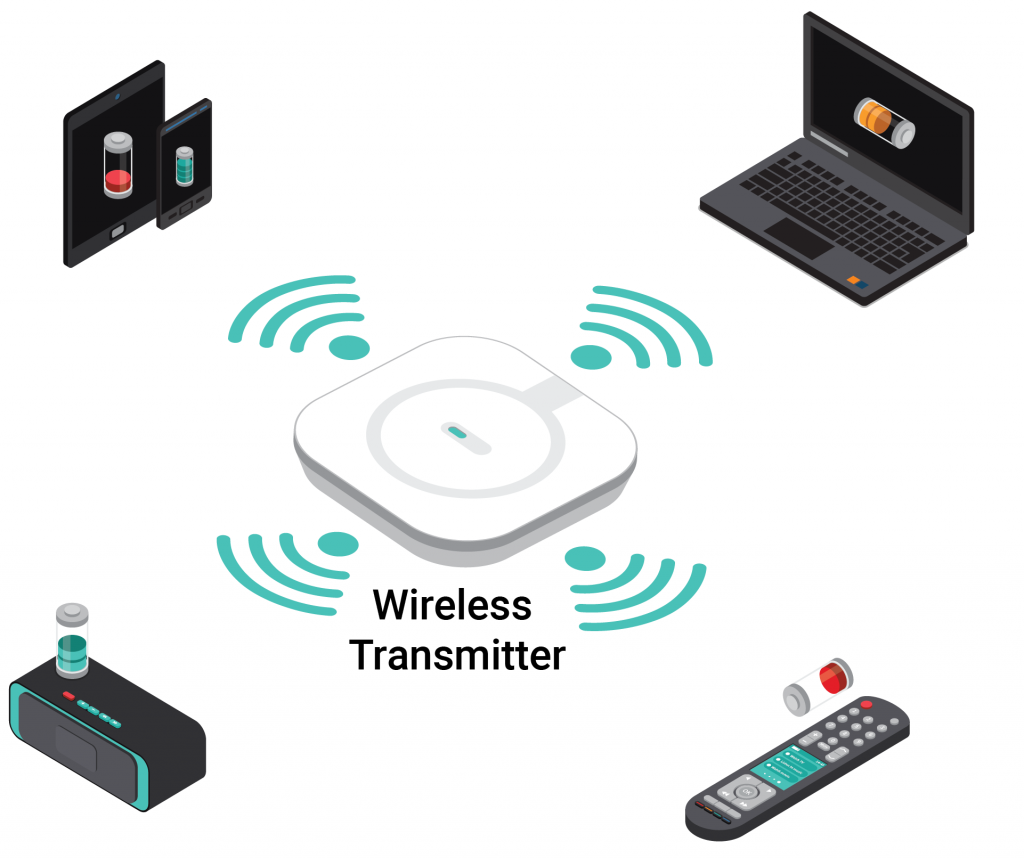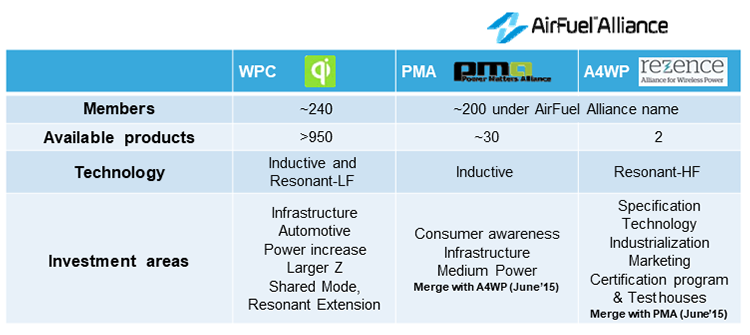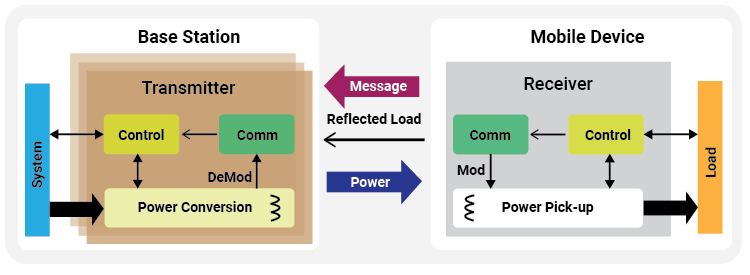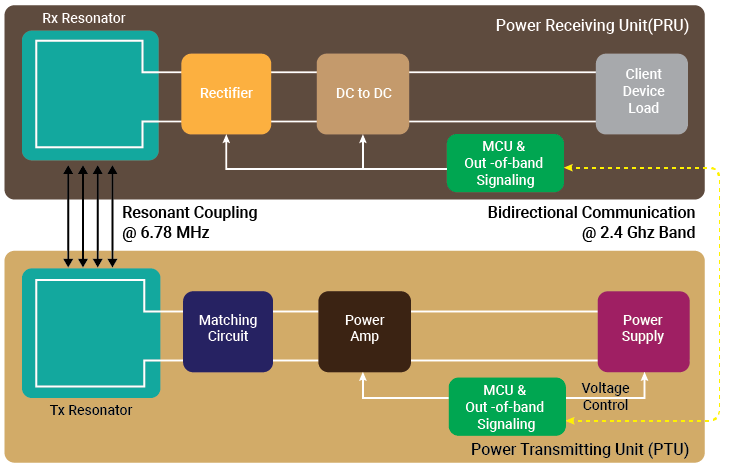The wireless inductive charging works on the basic principle of power transfer by generating an electromagnetic field across the inductive transmitter and receiver coil within a certain amount of distance without any cable connection. The global wireless charging market size is expected to reach $40.24 billion by 2027, growing at a CAGR of 22.2% from 2020 to 2027.
The main aim of the technology is to charge industrial devices, personal electronic devices, household appliances, and portable devices wirelessly without any cable requirement with better efficiency. Adverse to its main aim, wireless inductive charging does not work completely without cables when it is not powered through a battery. The charging stations/transmitters will be still connected with the main power socket via a power cable and remain connected constantly when it does not have a battery. But the small personal electronic gadgets like smartphones recharge wirelessly. It must need to be placed near the wireless station/transmitter. The charging station/transmitter incorporates a coil through which AC (alternating current) flows to the receiver coil of the personal gadgets and this electricity generates an electromagnetic field. When the small personal electronic gadgets like the smartphone are within this electromagnetic field area to be charged.

Advantages of Adopting Wireless Charging Technology in Industries
Recently, wireless inductive charging is rapidly evolving from theories toward standard features on commercial as well as industrial products, especially consumer electronic devices like smartphones, earbuds/AirPods, watches, etc. to minimize the wired charging requirements and accept a universal wireless solution to charge all the electronics personal gadgets using single station/transmitter and increase friendliness. The electronics waste reduces to support the universal solution like Qi (Chee) standard and can minimize the specific requirements of the charger for different devices. It is more flexible and energy-efficient due to on-demand power request from the receiver and can set the power transfer limit accordingly at the transmitter end for required power transfer. It also increases the flexibility for the battery-operated and wired device to avoid more costly, hazardous and unfeasible options.
Disadvantages of Wireless Charging Technology
The only disadvantage of wireless charging is that it generates more heat than the wired charger and also needs a special mechanical moulding/cavity to be placed.
Let’s talk about the current trend of Wireless Inductive Charging Technologies Basics
Their maturity of the wireless charging technology is moving towards two major directions: Charging Based on Radio Frequency and Charging based on Coupling. For safety and worldwide inductive wireless technology support, there are mainly two standards are formed to support wireless charging: Qi – by Wireless Power Consortium (WPC) standard, Airfuel – by merged PMA – by Power Matter Alliance and A4WP – by Alliance for Wireless Power (A4WP) standard.

The inductive coupling power transfer is also capable of supporting high power transfer above the kilowatt level, so it is widely used by industrial automation like robot manipulation, automated underwater vehicles, induction generators, and motors. To energize the battery of electric vehicles (EVs) including plug-in hybrid electric vehicles (PHEVs), the overall efficiency is above 80-90% with 1 to 10KW power with a distance of less than cm. The lower and medium power near-field charging (ranging from several watts to tens of watts power) are widely used by medical setups and household daily appliances like inductive toothbrushes, TV, lighting wall switch, etc., and small personal electronics portable devices. More applications have recently contacted the oil well, off-shore energy harvesting, coal mine, electric bike, sensors, wearable devices, implantable systems, RFID, light-emitting diode (LED) display, power line communication, and smart grids.
Out of both the wireless charging technologies, nowadays, the coupling based charging especially the inductive is the choice for the Industrial and Commercial due to easy and low-cost implementation, the lesser power, lower frequency, higher efficiency, and safety concerns of RF directives for consumers and so that it is widely used in today’s era.
The magnetic inductive and magnetic resonance coupling both the technology work on the near field, where the created electromagnetic field commands the region close to the scattering object/transmitter. The near-field power is attenuated according to the cube of the reciprocal of the charging distance.
Inductive Coupling
- It works on the basic principle of the magnetic field induction that delivers electrical energy between two coils
- Power transfer is due to the varying electromagnetic field generated from the primary coil across the secondary receiver coil and induces the current/voltage within the field, generally less than a wavelength. This induced voltage can be used for charging a wireless device
- The operating frequency of inductive coupling is typically in the KiloHertz in the range of 110KHz to 205KHz. The secondary coil should be tuned at the operating frequency to raise the charging efficiency
- The quality factor is generally small due to power attenuation is high at higher so that effective charging distance is less than 20cm. For example – RFID and the overall effective power can be achieved higher up to KW for electric vehicles
- The reward of magnetic inductive coupling includes easy implementation, commodious operation, better efficiency in close distance (identically less than a diameter of the coil), and ensure safety. Hence, it is popular for small personal, and portable electronic devices
The market for personal electronics and portable devices are more focused on the internally accepted Qi-standard formed by the WPC. The Qi standard mainly focuses on the magnetic induction power transfer, supports a single station to charge all the personal devices, digital in-band link is used for the identification of compatible devices and control power levels.

Magnetic Resonance Coupling
- It works on the basic principle of evanescent wave coupling which generates and transfers energy between two resonant coils through oscillating magnetic fields
- It can be achieved with high energy transfer efficiency with small leakage to non-resonant outwards
- This technology can be applied between one transmitting resonator and multiple receiver resonators. Therefore, it enables concurrent charging of multiple devices that operate on the MHz frequency range with a higher quality factor
Still, Magnetic Resonance power transfer from Airfuel is also focused in the industry which is operating a frequency of 6.78MHz, single power transmitting unit can be powered to multiple power receiving units. BLE link is used for the identification of compatible devices and control of power levels.

About VOLANSYS
VOLANSYS has hands-on experience in designing and developing smart wireless charging solutions that supports Qi-standards as a BPP device. To understand the VOLANSYS experience and expertise, let’s take a look at one of the use-cases of their US-based client.
Smart Power Bank Carry Case
VOLANSYS client wanted to design a smart carry case system that supports wireless inductive coupling based charging for their end-customers. It should also have some major features like:
- 5W wireless transmitter system to charge the world wide supported Qi (Chee) standard based Below Power Profile (BPP) devices like earbuds, AirPods, smartwatches, and other small personal and portable electronic devices
- Charge via internal battery while ensuring the overall form factor remains compact and looks elegant and cost-effective design for very high volume manufacturing
VOLANSYS helped the client by understanding their requirement and performed as a single-stop solution provider from the concept stage (R&D) to production (design services – both mechanical & hardware/firmware) and commercialization (production readiness and manufacturing & shipping) of the product. We also reduced the hassle of multi-vendor coordination by providing extensive support in the overall solution and reduce time to market.
Note: The content of this blog is based on the personal knowledge of any research work done by any individuals. The market research report on the wireless charging technology market is used from the website Allied Market Research and technical details are referred from Wireless Battery Charging PDF and Wireless Charging Technologies: Fundamentals, Standards, and Network Applications IEEE paper. Figures are kept to the best of our knowledge and not to mislead in any manner.

About the Author: Nilav Choksi
Nilav Choksi is associated with VOLANSYS Technologies as Principle Engineer for more than 5 years. He has total 8 years of diversified experience in Embedded Hardware board design in the field of embedded systems, Wireless domain for consumer and industrial Electronics. He has experience end-to-end product development experience, starting from customer requirements to design, development, and hardware bring-up to implementation to product certification.









